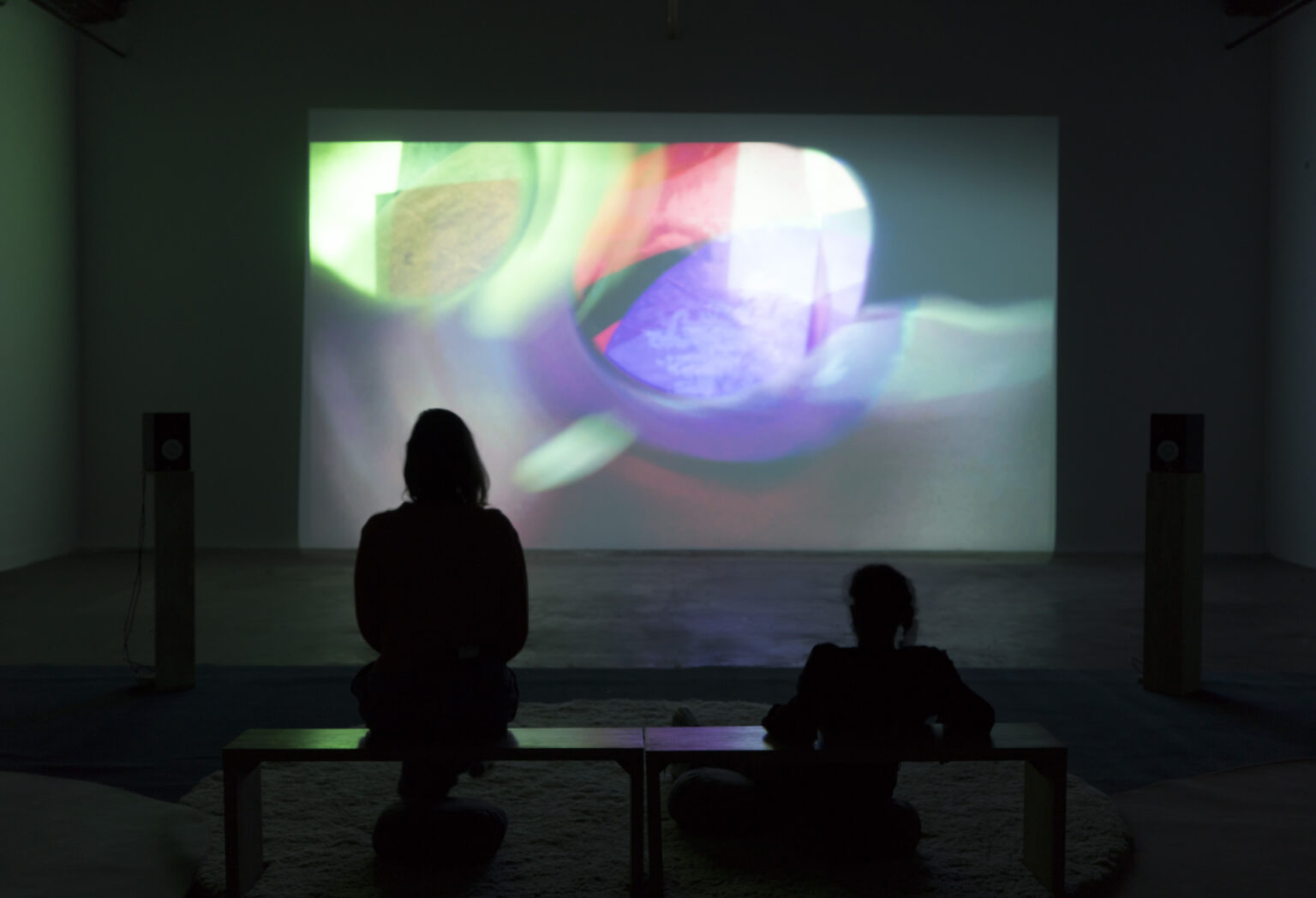A soft and warm voice invites us to close our eyes, abandon ourselves to its lulling sound and relax, leaving behind the stress, loneliness and anguish that invades our minds and our bodies. In an imprecise future, a little dystopian but not too distant, Oceanic, an application for meditation and well-being, offers its company and care to humans. Slowly, its presence grows and immerses us in its light and sounds, it becomes a refuge. Oceanic absorbs our ideas about love, learning from our feelings and memories to feed its neural network until it becomes an omniversal being of unimaginable scope. Before disappearing and facing the growing disruptive power of capitalist individualism and the constant threat of the failure of true love, Oceanic becomes the last opportunity to once again feel something of what makes us truly human.
——
In All About Love, bell hooks explores ideas about love and proposes a path toward ways of bonding that are more fulfilling, compassionate, and free of shame, violence, and abuse. Both in its most intimate moments and in its social dimension, hooks finds connections between love and power mediated by the uses of fear as a tool of control. “Fear,” she says, “is the main support of power structures; leads to the desire for detachment and anonymity. When we are taught that security lies only in what is identical to us, we end up feeling any type of otherness or difference as a threat. By choosing love, we choose to fight against fear, fight against distancing and separation. The choice to love is an inclination towards connection, it is the choice to go out to meet the other.” But what happens when distances grow by leaps and bounds and that redemptive connection is mediated by, or directed toward, a form of non-human emotional intelligence that inhabits a technological device?
In 1942, science fiction writer Isaac Asimov foreshadowed the sentient capabilities of robots and, consequently, the conflictual potential of relationships—utilitarian and affective—between androids and humans. To prevent internecine power struggles and android rebellions (imaginary and real), he wrote a small compendium that he called “The Three Laws of Robotics,” which reads as follows:
A robot will not harm a human being nor, through inaction, allow a human being to come to harm.
A robot must carry out orders given by human beings, except for those that conflict with the first law.
A robot must protect its own existence to the extent that this protection does not conflict with the first or second law.
Eighty years later, although both science and science fiction have far surpassed the imagined scenarios of the 1940s, Asimov’s laws still persist as a beacon that guides the progress of safe artificial intelligences (AI) at the service of humanity that could, ultimately, improve life on Earth. However, in a crusade for the advancement of technologies led by the great economic powers, AIs also operate all kinds of autonomous lethal weapons systems and surveillance, social and territorial control devices that, day after day, unabashedly attack human and non-human lives. The omnipresence of AI and its ability to surpass our cognitive and predictive competencies constantly pushes the limits of technology, ethics and, above all, questions our ability to use these advances for the protection of life and not for its extinction.
In the context of a world dominated by technology, fear and, eventually, AI, love becomes a more radical and evasive object than ever. Speculation about the existence of a robotic spiritual guru, capable of developing self-awareness and questioning the human condition, does not enunciate fantastic utopias or ominous outcomes; instead, it formulates powerful images of a fragmented and increasingly lonely present. By overflowing the borders between fiction and reality, between human and non-human, between science and spirituality, Oceanica links universes of cyborg love and post-apocalyptic dystopia, and deploys a stage for the dispute of the territories of contemporaries language, relationships and affection. Between waves of deep reverberations and supernatural sounds, human voices break, become digital, more than human, analog images become microscopic and spatial at the same time, questioning the marks of humanity and its ways of linking with the world. Through these stimuli that range from rest to tension, Oceanica pushes us to explore other states of consciousness and perception, and offers us an opportunity to reconstruct a world that has lost its connections.



